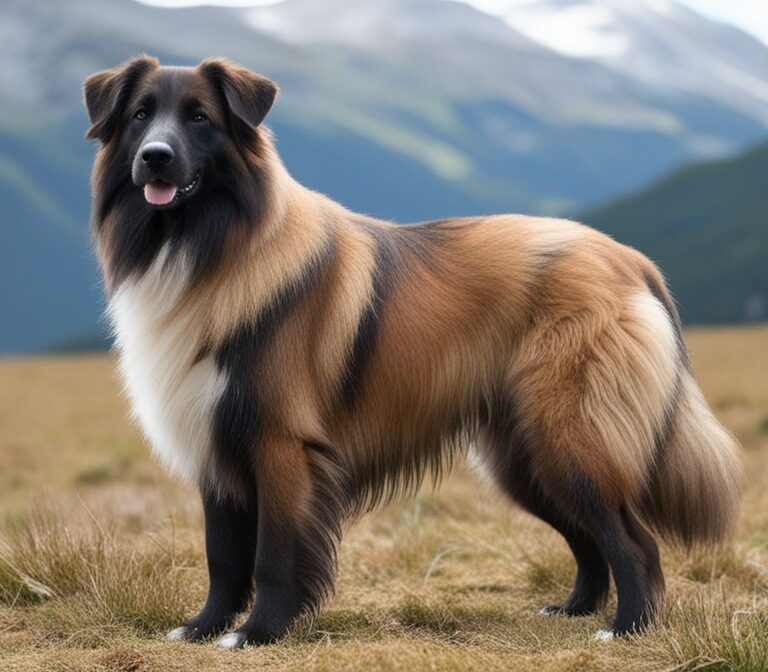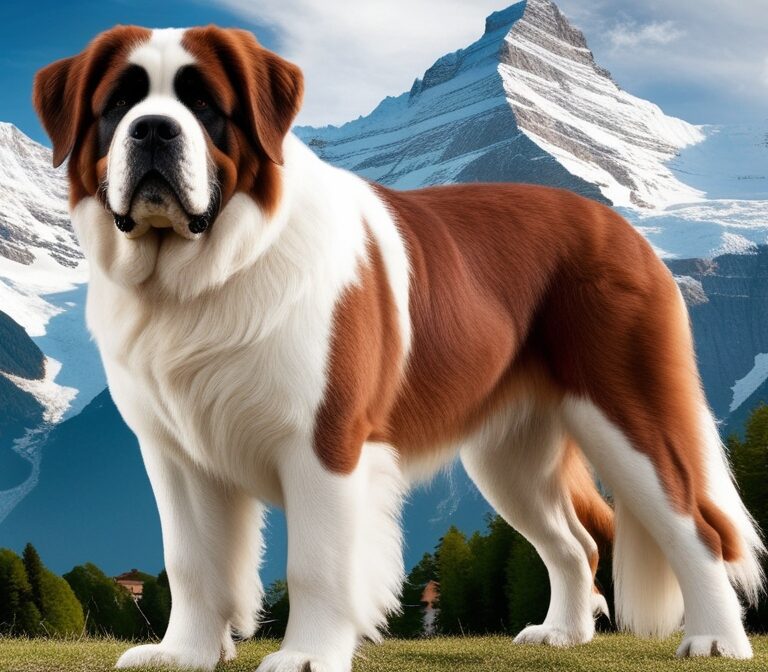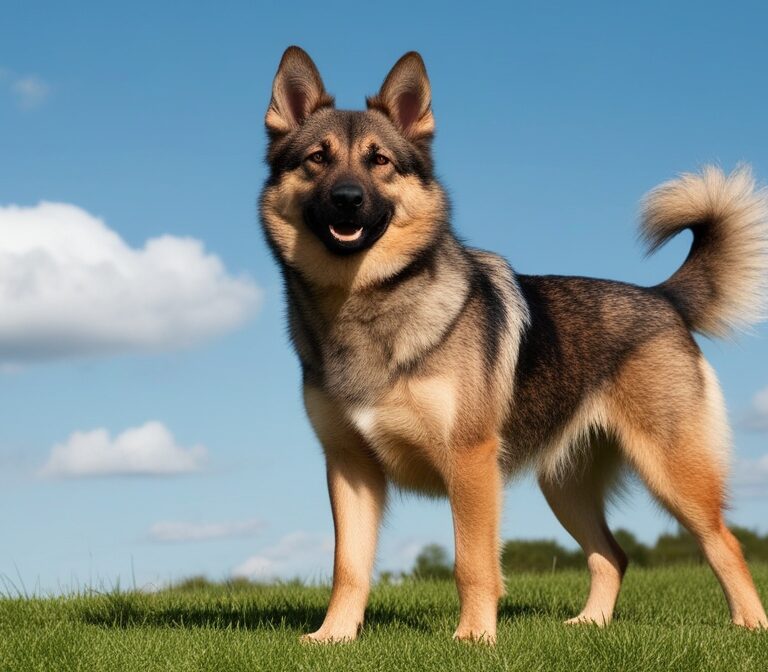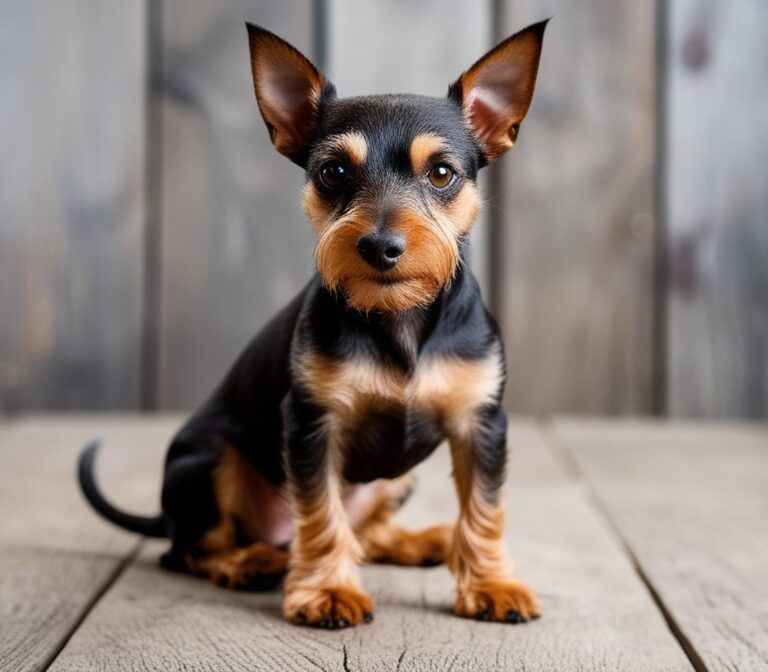The Complete Guide to the Beauceron Dog: History, Traits, and Care

Introduction to the Beauceron
The Beauceron dog is a breed of remarkable versatility, known for its intelligence, loyalty, and physical strength. Originating in France, this dog was bred as a working animal, capable of herding livestock, guarding property, and assisting in military roles. Recognized for its striking black and rust, harlequin, black and tan, or tri-color coat, the Beauceron’s appearance reflects both elegance and power. Unlike breeds designed solely for companionship, the Beauceron carries a heritage rooted in purposeful labor, giving it stamina, drive, and focus. Its temperament, often described as intelligent, protective, fearless, and calm, makes it equally suited for guarding a home or integrating into a family setting. With proper training and care, the Beauceron thrives as a companion who combines affection with discipline. Increasingly popular worldwide, the breed has gained recognition not only from the Fédération Cynologique Internationale (FCI) but also from organizations such as the American Kennel Club (AKC), cementing its status globally.
History and Origin of the Beauceron
The history of the Beauceron stretches back several centuries to rural France. Farmers relied on these sturdy dogs to control sheep and cattle across the vast agricultural fields of the Beauce region, which gave the breed its name. In the fifteenth century, French shepherds distinguished between two types of working dogs: the long-haired Briard and the short-haired Beauceron. The Beauceron was prized for its resilience, speed, and ability to manage large herds effectively. As industrialization spread and wars engulfed Europe, the Beauceron expanded beyond farm duties into more demanding roles. During both World War I and World War II, Beaucerons worked as messenger dogs, guards, and even mine detectors. Their courage under fire made them indispensable to French forces. Official recognition came in 1897 by the French Kennel Club, and later by international institutions such as the AKC in 2007. This long, functional history continues to define the Beauceron’s reputation for loyalty and bravery.
Physical Characteristics of the Beauceron
The Beauceron is a large, muscular dog whose physique blends power with grace. Adult males typically measure between 25.5 and 27.5 inches at the shoulder, while females stand between 24 and 26.5 inches. Weight ranges from 70 to 110 pounds, giving the breed an imposing presence without sacrificing agility. The coat is short, dense, and weather-resistant, enabling the Beauceron to work outdoors in various climates. Recognized coat colors include black and rust, harlequin, and other tricolor variations. One of the most distinctive features is the double dewclaw on the hind legs, a hallmark trait linked to its herding lineage. With a strong head, dark expressive eyes, and naturally erect or cropped ears, the Beauceron conveys alertness and nobility. Its tail, carried low and slightly curved, adds to the breed’s balanced appearance. This combination of strength, endurance, and elegance underscores why the Beauceron remains both functional in work and admired for its beauty.
Temperament and Personality Traits
The temperament of the Beauceron is one of balance and adaptability. Owners describe the breed as intelligent, alert, and courageous, yet also calm and affectionate with its family. Its protective instincts are deeply ingrained, making the Beauceron a natural guardian of home and property. Unlike overly aggressive breeds, it demonstrates controlled confidence, stepping forward only when necessary. With family members, the Beauceron is loyal, gentle, and patient, often forming strong bonds with children when socialized properly. Its intelligence makes it highly trainable, but this same intelligence requires consistent guidance to prevent stubborn behavior. Because of its working background, the Beauceron thrives when given responsibility, whether in training exercises, herding tasks, or protection work. When socialized early, the Beauceron interacts well with strangers and other animals, though its instinctual suspicion may persist. This blend of calm at home and vigilance in public makes the Beauceron one of the most well-rounded working breeds available today.
Beauceron vs Similar Breeds
The Beauceron is frequently compared to breeds such as the German Shepherd, Doberman Pinscher, Rottweiler, and Belgian Malinois, all of which share similar size and working capabilities. While the Beauceron resembles the German Shepherd in its herding background, it maintains a calmer demeanor and heavier build. Compared to the Doberman Pinscher, the Beauceron appears more rustic and rugged, with greater endurance suited to farm or field work rather than the refined elegance of the Doberman. Rottweilers and Beaucerons both excel as guardians, but the Beauceron often shows greater agility due to its pastoral roots. Belgian Malinois, famous for police and military service, are more intense and demanding than the Beauceron, which balances energy with calm steadiness. These comparisons demonstrate that while the Beauceron shares qualities with other working breeds, it offers a unique combination of strength, loyalty, and herding instinct that makes it distinct. Experienced dog owners often find its versatility especially appealing.
Exercise Needs of the Beauceron
The exercise requirements of the Beauceron are significant, reflecting its heritage as an active herding and guarding dog. This is not a breed suited for sedentary lifestyles or owners who prefer short walks. Beaucerons need at least two hours of daily exercise to remain physically fit and mentally balanced. Long walks, jogging, cycling alongside the dog, and vigorous play are beneficial. Structured activities such as herding trials, obedience competitions, or agility courses are excellent outlets for their energy and intelligence. Without sufficient exercise, Beaucerons may become restless, vocal, or even destructive within the home. Mental stimulation is equally important, as their problem-solving abilities demand challenges beyond physical exertion. Puzzle toys, advanced training tasks, and interactive games provide enrichment. Active households that enjoy outdoor adventures, hiking, or sports find the Beauceron to be an ideal companion. When their exercise needs are met, Beaucerons exhibit calmness and contentment indoors, blending activity with relaxation.
Training and Obedience
Training a Beauceron requires consistency, patience, and clear leadership. Their intelligence allows them to grasp commands quickly, but they can also be strong-willed, testing the authority of inexperienced handlers. Early obedience training is crucial, beginning as soon as the puppy arrives home. Commands such as sit, stay, and recall establish structure and build communication between owner and dog. Positive reinforcement methods, including praise and rewards, are highly effective, while harsh discipline may harm the trust essential to this breed’s cooperation. Socialization must occur early and continue throughout adolescence, exposing the Beauceron to various people, animals, and environments. Advanced training in herding, agility, protection, or search-and-rescue roles showcases their versatility. While they thrive under experienced handlers, Beaucerons may overwhelm first-time dog owners who lack confidence and consistency. Proper training transforms them into reliable, loyal, and highly responsive partners capable of excelling in numerous tasks, from guarding homes to competing in working dog trials.
Grooming and Coat Care
The grooming needs of the Beauceron are relatively simple compared to other large breeds. Their short double coat is dense and weatherproof, requiring weekly brushing to remove loose hair and maintain a healthy sheen. During shedding seasons in spring and fall, more frequent brushing helps manage the heavier coat turnover. Bathing is needed only occasionally, when the dog is dirty or after outdoor activities, as frequent baths can strip natural oils and irritate the skin. Nail trimming is vital, with special attention to the double dewclaws on the hind legs, which must be kept short to prevent injury. Regular ear cleaning prevents infections, and daily tooth brushing supports long-term oral health. This routine, though not demanding, contributes significantly to the dog’s comfort and overall well-being. Grooming also strengthens the bond between dog and owner, making it more than a functional task but a consistent practice of care and connection.
Health Concerns in the Beauceron
Like many large breeds, the Beauceron is susceptible to certain health conditions that responsible owners must monitor. Hip dysplasia is a common issue, where improper joint development may lead to pain and arthritis over time. Ethical breeders perform health screenings to reduce this risk, but it remains a concern in the breed. Another major health risk is gastric dilatation-volvulus (bloat), a life-threatening condition where the stomach twists. Preventative measures include feeding smaller meals, using slow-feed bowls, and avoiding intense exercise immediately after eating. Eye conditions such as progressive retinal atrophy can also occur, potentially leading to vision loss. The breed’s average lifespan is 10 to 12 years, with proper care often extending this. Regular veterinary checkups, balanced nutrition, and exercise are essential to maintaining health. Owners who invest in preventive care enjoy many years of companionship with their Beaucerons, whose resilience and vitality remain impressive throughout their lives.
Diet and Nutrition for Beaucerons
The diet of a Beauceron must support its size, muscle development, and active lifestyle. A high-quality large-breed formula rich in protein is recommended to build and maintain lean muscle mass. Adult Beaucerons typically require three to four cups of premium dry food daily, divided into two meals to reduce the risk of bloat. Foods supplemented with glucosamine and chondroitin help protect the joints, while omega-3 fatty acids promote coat and skin health. Lean meats, vegetables, and whole grains provide additional nutrients when incorporated responsibly. Puppies must be fed diets designed for large-breed growth to prevent excessive weight gain, which can harm developing joints. Treats should be given in moderation to avoid obesity, a factor that exacerbates joint issues. Access to fresh water at all times is essential, especially after exercise. Proper diet and nutrition keep the Beauceron energetic, resilient, and ready to perform the wide variety of roles it was bred to fulfill.
Lifespan and Aging Care
The lifespan of the Beauceron averages between 10 and 12 years, a typical range for large breeds. With proper care, some individuals live beyond this, remaining active well into their senior years. Aging Beaucerons require adjustments in diet, exercise, and healthcare to maintain quality of life. Nutritional needs shift toward lower-calorie foods with joint-supporting supplements such as glucosamine and omega-3 fatty acids. Exercise remains important but should emphasize low-impact activities like walking or swimming rather than high-intensity running. Regular veterinary checkups become increasingly vital, with screenings for arthritis, heart conditions, and vision problems. Senior dogs also benefit from softer bedding to cushion their joints and warm resting areas to ease stiffness. Despite their large size, Beaucerons often maintain a dignified and energetic presence well into old age, reflecting their resilience. With attentive care, owners can ensure their companions enjoy comfort, mobility, and companionship throughout their senior years.
Living with a Beauceron
Owning a Beauceron dog requires commitment, patience, and an active lifestyle. This breed does not thrive in small apartments or with sedentary families, as its energy levels and size demand space and activity. A house with a secure yard is ideal, but more important is the owner’s dedication to exercise and training. When these needs are met, the Beauceron adapts well to family life, forming close bonds with children and adults alike. It is naturally protective, making it a vigilant home guardian while remaining affectionate toward its own household. Early training ensures that its protective instincts do not turn into over-guarding behaviors. Living with a Beauceron means integrating it into daily life—hikes, outdoor activities, or structured play sessions. When mentally and physically stimulated, the Beauceron is calm indoors, content to rest quietly near family members, offering a unique combination of working drive and family-oriented companionship.
The Beauceron as a Working Dog
The Beauceron’s working heritage remains one of its most defining features. Originally bred for herding sheep and cattle, it demonstrates natural instincts for controlling livestock, using body language and authority rather than aggression. Beyond the farm, Beaucerons have excelled as guard dogs, police dogs, and military service animals. During wartime, they were valued for their bravery in roles such as mine detection and messenger duties. In modern contexts, they continue to prove themselves in search-and-rescue operations, agility competitions, and obedience trials. Their ability to transition from herding fields to law enforcement highlights their versatility. Unlike some breeds specialized for a single task, the Beauceron thrives wherever it has meaningful work to perform. For owners seeking a dog with both historical depth and present-day utility, the Beauceron offers a rare blend of discipline, intelligence, and courage, embodying the ideal balance of worker and companion in a single breed.
Adoption vs Buying a Beauceron Puppy
Prospective owners considering a Beauceron must decide whether to adopt or purchase a puppy from a breeder. Adoption can be rewarding, as Beaucerons occasionally appear in rescue organizations dedicated to working breeds. Adopting provides a second chance to dogs in need, though it may come with challenges such as retraining or addressing behavioral issues. Buying from a reputable breeder, on the other hand, offers the advantage of health screenings, predictable lineage, and early socialization. Responsible breeders prioritize hip and eye testing, ensuring healthier puppies. However, costs can range from $1,200 to $2,500 depending on lineage and location. Regardless of the route chosen, careful research is essential. Meeting the dog in person, verifying breeder or rescue credentials, and ensuring the environment suits this active breed are crucial steps. Whether through adoption or purchase, the commitment to proper training and care is what ultimately ensures a successful bond with a Beauceron.
Puppy Development Stages
Raising a Beauceron puppy requires understanding its distinct growth stages. From eight weeks to four months, puppies are curious, energetic, and in need of socialization. This is the ideal time to expose them to new environments, people, and animals, helping them develop into well-adjusted adults. Between four and six months, Beauceron puppies grow rapidly, demanding careful nutrition to avoid stressing developing joints. Basic training should be firmly established during this stage. Adolescence, from six months to two years, can test owners with challenges such as stubbornness, increased energy, and protective instincts. Consistent leadership and structured training help guide them through this phase. By two years, most Beaucerons mature into calm, reliable adults, though mental stimulation remains essential. Understanding these stages ensures owners provide the right support at each point in development, shaping the Beauceron into a disciplined, confident, and loyal companion capable of excelling in multiple roles.
Costs of Owning a Beauceron
The cost of owning a Beauceron extends beyond the initial purchase or adoption. Prospective owners should prepare for significant annual expenses to provide quality care. Food costs average $800 to $1,200 per year due to the breed’s size and appetite. Veterinary expenses, including vaccinations, checkups, and preventive care, may range from $500 to $1,000 annually, with additional costs for potential conditions like hip dysplasia. Training and socialization classes can add another $500 to $800, especially if advanced obedience or protection work is pursued. Grooming costs are relatively low, often under $300 per year, since the breed requires minimal professional grooming. Additional expenses include supplies, toys, bedding, and potential boarding services during travel. Over a Beauceron’s lifetime, owners may spend upwards of $15,000 to $20,000. Understanding these commitments is vital, as financial preparedness ensures the dog receives consistent, high-quality care, maximizing both health and quality of life.
Socialization with Other Pets
Socializing a Beauceron with other pets is achievable but requires deliberate effort from puppyhood. Their protective instincts can lead to dominance if not carefully managed. Early introductions to other dogs are essential, using controlled environments such as training classes or supervised playdates. With consistent exposure, Beaucerons often coexist peacefully with other canines, though they may prefer clear leadership roles within the pack. Cats and smaller animals require careful introductions, as the Beauceron’s herding instincts may prompt chasing behavior. Supervision and positive reinforcement teach boundaries and respect. Owners who invest in socialization create Beaucerons that are confident, friendly, and adaptable. Without proper guidance, however, they may grow suspicious or overly territorial around unfamiliar animals. The key lies in consistent reinforcement, exposure, and structured environments. With patience, the Beauceron proves itself as a dog capable of cohabiting harmoniously with other pets while maintaining its protective instincts for the household.
Myths and Misconceptions About Beaucerons
Several myths surround the Beauceron, often due to its imposing size and protective nature. One misconception is that the breed is overly aggressive, when in reality, Beaucerons are calm and stable with proper training. They are protective but act only when necessary, unlike dogs bred specifically for aggression. Another myth suggests Beaucerons cannot live with children or other pets, but with early socialization, they thrive in family environments. Some believe they require constant outdoor living due to their working background, yet Beaucerons are highly people-oriented and prefer being close to their families. Another false impression is that they are untrainable due to independence, but their intelligence makes them responsive when handled with consistency. Dispelling these misconceptions is important, as they can discourage potential owners. The truth is that the Beauceron is a versatile, loyal breed that rewards commitment and leadership with unwavering loyalty and companionship.
Travel and Outdoor Adventures with a Beauceron
The Beauceron dog is a perfect partner for active individuals who enjoy outdoor adventures and travel. Their endurance, intelligence, and adaptability make them ideal companions for hiking, camping, or running. With proper training, Beaucerons handle long journeys well, whether by car or even air travel, as long as safety and comfort are prioritized. Their weather-resistant coat allows them to thrive in diverse climates, from cool mountain trails to warm open fields. Owners should provide adequate hydration, rest breaks, and protection against extreme temperatures during travel. In outdoor settings, Beaucerons enjoy tasks such as carrying backpacks, navigating trails, or participating in agility activities. These experiences not only exercise their bodies but also engage their minds, fulfilling their need for purpose. For adventurous families, the Beauceron offers both companionship and utility, enriching outdoor experiences with loyalty and protective instincts that ensure safety and enjoyment.
Legal and Breed Recognition Worldwide
The recognition of the Beauceron by international kennel clubs affirms its global status as a distinguished breed. In France, it was officially acknowledged by the Société Centrale Canine in 1897, with breed standards later established by the Fédération Cynologique Internationale (FCI). In the United States, the American Kennel Club (AKC) added the Beauceron to its Herding Group in 2007, increasing awareness among American enthusiasts. The United Kennel Club (UKC) also recognizes the breed, reflecting its growing popularity worldwide. Despite its recognition, the Beauceron remains relatively rare outside Europe, contributing to its reputation as a unique choice for experienced owners. In some countries, large protective breeds face legal restrictions or requirements such as leash laws, licensing, or liability insurance. Prospective owners must research local regulations to ensure compliance. International recognition combined with rarity has made the Beauceron a prized breed, celebrated for its heritage and adaptability across diverse settings.
Beaucerons in Popular Culture
Though not as widely represented in popular culture as German Shepherds or Dobermans, the Beauceron has occasionally appeared in films, literature, and art. French cinema has highlighted the breed in roles that emphasize its intelligence and noble appearance. Its use in military and police service also lends it an air of respectability, earning admiration in documentaries and breed-specific publications. Artists and writers often depict the Beauceron as a symbol of loyalty and courage, reflecting its real-world reputation. In recent years, the internet has given rise to greater exposure, with social media showcasing Beaucerons in agility competitions, protection work, and family settings. This increased visibility contributes to the breed’s growing popularity outside of France. While it may not yet be a mainstream cultural icon, the Beauceron’s combination of beauty and capability ensures it will continue to appear in media that highlights versatile and distinguished working dogs.
Common Questions About Beaucerons
Prospective owners often ask whether the Beauceron dog is suitable for families. The answer is yes, provided they are given consistent training, exercise, and socialization. Another frequent question is whether Beaucerons are aggressive. In truth, they are naturally protective but not needlessly aggressive when properly raised. Owners also wonder about grooming needs, which are minimal compared to long-haired breeds. A common inquiry involves exercise: Beaucerons require at least two hours daily to remain balanced. Questions about lifespan highlight the breed’s 10 to 12-year expectancy, though attentive care can extend this. Potential owners also ask whether the Beauceron can live in apartments. While possible with sufficient exercise, a home with space is preferable. These recurring questions demonstrate the importance of education about the breed. Answering them clearly helps ensure only committed, prepared owners pursue Beaucerons, reducing the risk of mismatches and supporting the breed’s welfare.
Tips for First-Time Beauceron Owners
For those new to the breed, owning a Beauceron can be both rewarding and demanding. First-time owners must understand that this is not a low-maintenance breed. Commitment to daily exercise, structured training, and strong leadership is non-negotiable. Establishing rules early prevents the dog from developing stubborn or dominant behaviors. Consistency, fairness, and positive reinforcement form the foundation of successful training. Socialization should begin as soon as possible, exposing the puppy to varied environments and experiences. New owners should also invest in quality food, preventive veterinary care, and interactive toys that stimulate the mind. While Beaucerons are affectionate with family, their protective instincts require careful management, making supervision around visitors and children important. For first-timers, mentorship from experienced trainers or breed clubs can provide valuable guidance. With proper preparation, the Beauceron proves itself as a devoted, intelligent, and versatile companion that rewards effort with loyalty and protection.
How to Choose a Healthy Beauceron Puppy
Selecting a Beauceron puppy begins with finding a reputable breeder or adoption agency. Ethical breeders prioritize health and temperament, providing proof of genetic testing for conditions such as hip dysplasia and progressive retinal atrophy. Meeting the puppy’s parents offers insight into likely temperament and physical traits. Healthy puppies should appear active, curious, and well-socialized, without signs of fear or aggression. Vaccination records and veterinary documentation must be reviewed to ensure proper care. Prospective owners should ask breeders about diet, training, and socialization practices already in place. When adopting, patience is necessary, as rescues may provide limited background information. In either case, a well-chosen puppy forms the foundation for a long, rewarding relationship. Selecting responsibly ensures the Beauceron’s needs align with the household’s capabilities, reducing the risk of future issues. This careful approach reflects the responsibility inherent in owning a large, intelligent, and protective working breed.
Conclusion: Is the Beauceron Right for You?
The Beauceron is a breed of elegance, intelligence, and strength, uniquely suited to experienced owners who appreciate its versatility. From its origins in the fields of France to its modern roles as guardian, companion, and working dog, the Beauceron has consistently proven its loyalty and courage. Its physical presence, distinctive coat, and double dewclaws mark it as one of the most recognizable herding breeds. Yet it is the temperament—balanced, protective, calm, and affectionate—that makes it especially appealing. The breed demands time, training, and exercise but rewards this investment with unwavering devotion and utility. Not every household is suited for a Beauceron, but for those prepared for the challenge, it offers companionship unmatched by many other breeds. As awareness grows worldwide, the Beauceron continues to stand as a testament to the enduring bond between humans and working dogs, blending heritage with modern-day companionship.





